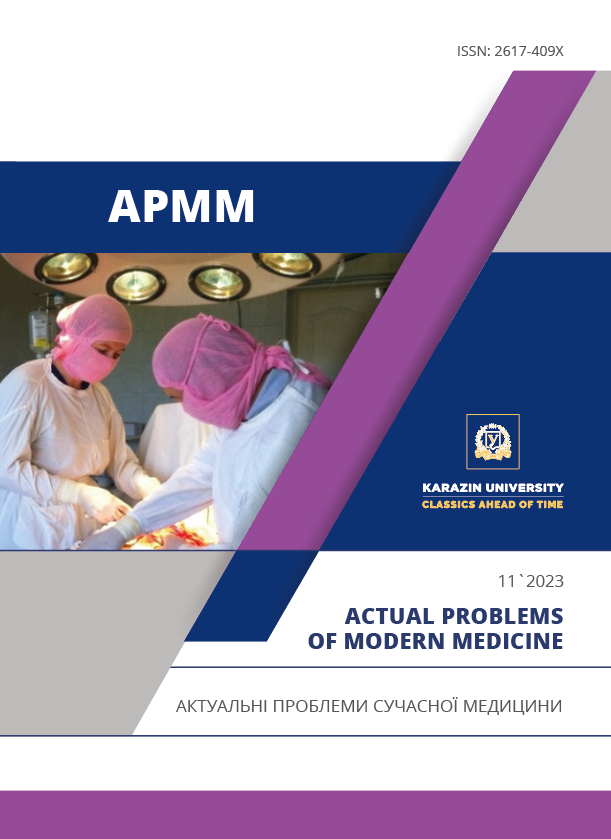Сучасні погляди на корекцію порушень вагінального біотопу в перименопаузі
Анотація
АНОТАЦІЯ. Забезпечення якості життя жінок клімактеричного періоду залишається сьогодні найактуальнішою проблемою сучасної медицини. Мета - оцінити ефективність антисептичного засобу Гінодек при лікуванні змішаної вульвовагінальної інфекції у жінок в перименопаузі. Матеріали та методи. Під нашим спостереженням було 52 пацієнтки зі змішаною бактеріально-кандидозною інфекцією віком від 44 до 52 років. Діагноз неспецифічної бактеріально-кандидозної інфекції був верифікований за даними клініко-лабораторних методів дослідження. Критеріями ефективності лікування була повна клінічна та бактеріальна санація. Хворі з бактеріально-кандидозною інфекцією отримували вагінальний гель Гінодек по 5 мл 1 раз на ніч 7 діб. Результати. Аналіз клінічної ефективності після проведення лікування показав, що у жінок в перименопаузі в 4 рази зменшилися скарги на дискомфорт у піхві та вагінальні виділення, диспареунію відмічали лише 5,8 % пацієнток порівняно з 69,2 % до лікування. Регенераторна ефективність клітин піхвового епітелію у пацієнток також покращилася, показник їх зрілості збільшився до 75-80. Бактеріологічне обстеження проведене через 2 тижні після закінчення курсу лікування підтвердило ефективність дії препарату Гінодек щодо бактеріальної інфекції у 92,3 % випадків, кандидозної – у 86,5 %. Висновки. Бактеріально-грибкові асоціації мікроорганізмів у вагінальному біотопі у жінок в перименопаузальному періоді призводять до формування складного комплексу не чітких клінічних симптомів, що утруднює своєчасну постановку діагнозу. Лікарський засіб Гінодек демонструє високу мікробіологічну ефективність при змішаній бактеріально-кандидозній інфекції у пацієнток в перименопаузі, а також підвищує функціональну активність епітелію слизової оболонки піхви, що особливо важливо в даному періоді життя жінки.
Завантаження
Посилання
Davydova YU, Lymansʹka A, Dvulit M, Fedorova N. Rolʹ nehormonalʹnykh metodiv likuvannya sechostatevoho syndromu menopauzy: suchasni pohlyady. Reproduktyvne zdorovʺya zhinky. 2021;9-10:17-22. [in Ukrainian]. DOI https://doi.org/10.30841/2708-8731.9-10.2021.252578
Shevchenko YEO. Sotsialʹno-psykholohichna dezadaptatsiya na tli shtuchnoho ta pryrodnʹoho klimakteriyu. Materialy V Vseukrayinsʹkoyi naukovo-praktychnoyi konferentsiyi «Osobystisni ta sytuatyvni determinanty zdorovʺya» (m. Kyyiv, 18 lystopada 2020 r.) Kyyiv. 2020:127-128. [in Ukrainian]. Dostupno: https://www.google.com/url?sa=t&rct=j&q=&esrc=s&source=web&cd=&ved=2ahUKEwiNjvG21eL9AhWPlYsKHbLzCfQQFnoECA0QAQ&url=https%3A%2F%2Fjhealth.donnu.edu.ua%2Farticle%2Fview%2F9220%2F9165&usg=AOvVaw2TSI9FcE6COc49dbVBo0t4
United Nations. World Population Prospects 2019: Highlights (ST/ESA/SER.A/423) [Internet]. New York: United Nations; 2019:46. Available from: https://population.un.org/wpp/Publica-tions/Files/WPP2019_Highlights.pdf
Hychka NM, Shcherba OA, Lastovetsʹka LD. Zapalʹni zakhvoryuvannya orhaniv maloho taza: suchasni uyavlennya pro etiolohiyu, pryntsypy diahnostyky ta likuvannya. Zdorov'ya zhinky. 2020;2(148):7-14. [in Ukrainian]. DOI https://doi.org/10.15574/HW.2020.148.7
Kovachev S. Deference factors of vaginal lactobacilli. Critical Reviews in Microbiology. 2018;44(1):31-39. DOI: https://doi.org/10.1080/1040841X.2017.1306688
Yankovskyy DS, Shyrobokov VP, Antypkyn YUH, Tatarchuk TF, Dyment HS. Mykrobyom y zdorovʹe zhenshchyny (obzor lyteratury). Reproduktyvna endokrynolohiya. 2015;4(24):13-28. [in Russian]. DOI: https://doi.org/10.18370/2309-4117.2015.24.13-28
Klymnyuk SI, Mykhaylyshyn HI, Malanchuk LM. Mikrobiolohichni osoblyvosti bakterialʹnykh vahinoziv u zhinok riznykh vikovykh katehoriy ta shlyakhy yikh mikrobiolohichnoyi korektsiyi. Zdobutky klinichnoyi i eksperymentalʹnoyi medytsyny. 2019;3:21-31. [in Ukrainian]. DOI: https://doi.org/10.11603/1811-2471.2019.v.i3.10258
Kravchenko OV. Dosvid vykorystannya preparativ khlorheksydynu v akusherstvi ta hinekolohiyi. Zdorovʹya zhenshchyny. 2018;3(129):46-50. [in Ukrainian]. DOI 10.15574/HW.2018.129.46
Kuznetsova YV, Shykh EV. Aérobnyy vahynyt: termynolohycheskye novosty y vybor émpyrycheskoy terapyy. Zdorovʹe zhenshchyny. 2018;5(131):23-25. [in Ukrainian]. Dostupno: https://med-expert.com.ua/journals/ajerobnyj-vaginit-terminologicheskie-novosti-vybor-jempiricheskoj-terapii/
Sherrard J, Wilson J, Donders G, Mendling W, Jensen JS. European (IUSTI/WHO) Guideline on the management of vaginal discharge. Int. J. STD AIDS. 2018;29(13):1258-1272. DOI: https://doi.org/10.1177/0956462418785451
Medvedyev MV. Suchasnyy menedzhment kandydoznoho vulʹvovahinitu (ohlyad konferentsiyi). Medychni aspekty zdorov'ya zhinky.2019;4-5(125-126):36-37. [in Ukrainian]. Dostupno: https://mazg.com.ua/uploads/issues/2019/4-5(125-126)/mazg19_36-37_522fd0980f9df5da5ddcab16c3c4f449.pdf
Asadi A, Razavi S, Talebi M, Gholami M. A review on anti-adhesion therapies of bacterial diseases. Infection. 2019;47:25-26. DOI: https://doi.org/10.1007/s15010-018-1222-5
Palacios S, Losa F, Dexeus D, Cor-tés J. Beneficial effects of a Coriolus versicolor-based vaginal gel on cervical epithelization, vaginal microbiota and vaginal health: a pilot study in asymptom-atic women. BMC Womens Health 2017;17:21. DOI: https://doi.org/10.1186/s12905-017-0374-2
Taran OA, Bulavenko OV, Konʹkov DH, Lobastova TV. Klinichnyy dosvid v optymizatsiyi reparatyvnykh protsesiv shyyky matky pislya destruktyvno-khirurhichnykh vtruchanʹ. Zdorovʺya zhinky. 2019;3(139):38-42. [in Ukrainian]. DOI: https://doi.org/10.15574/HW.2019.139




